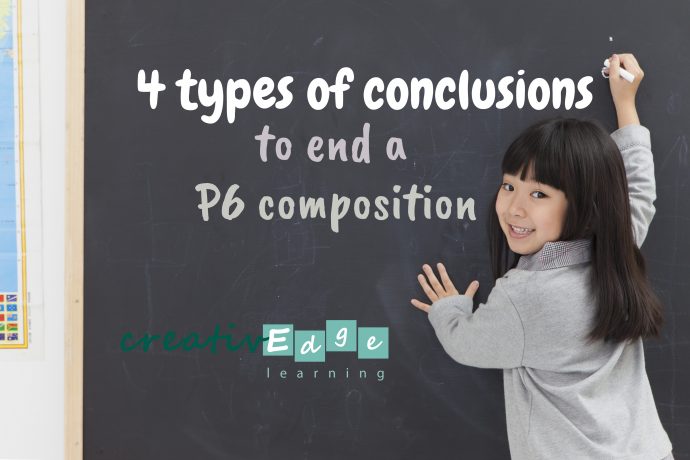
For P6 composition, knowing how to end a story is just as important as knowing how to write the different beginnings. Today, we will discuss about the 4 ways to end a Primary 6 composition.
The 4 ways to end a Primary 6 composition
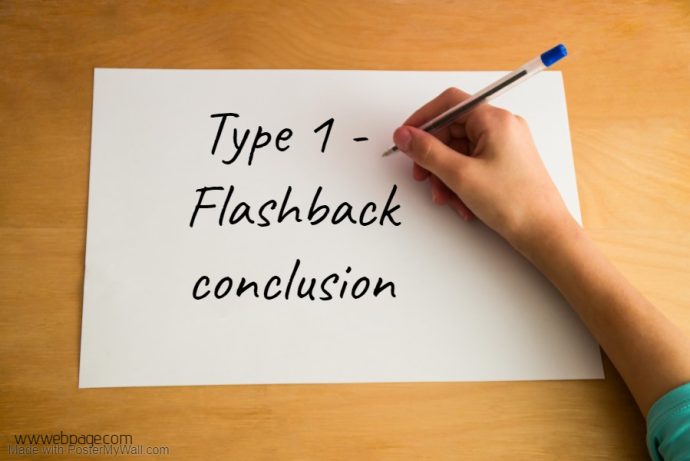
Most pupils are aware of using a flashback introduction to start the story.
For this example, we will be writing the flashback conclusion which can be paired with the flashback introduction using the given topic.
Step 1 – Start with the action that jolted the main character back to reality
The flashback conclusion should be connected to the flashback introduction.
Since the flashback introduction focuses on the principal’s speech during assembly, the flashback conclusion should be about what happened when the assembly was over.

Step 2 – Add the main character’s reaction
Next, pupils have to add the main character’s reaction to being jolted back to reality.
In this case, the main character could be leaving to return to class when the assembly was over.
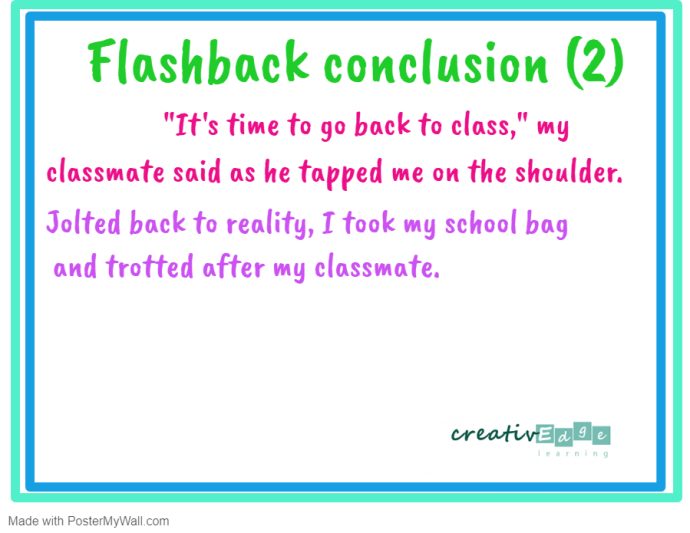
Step 3 – End with the lesson learnt
One of the main rule of writing a conclusion is to insert the title.
In this case, we are using a variation “kindness” based on the title “A kind act” to write the concluding lesson.


A story hook conclusion fully concludes the story.
For this example, we will be writing a story hook conclusion which complements this story hook beginning.
Step 1 – Answer the question
Pupils should answer the question in the story hook.
Since the question posed at the beginning of the story is about someone else eating the birthday cake, the answer in the conclusion should reveal the identity.
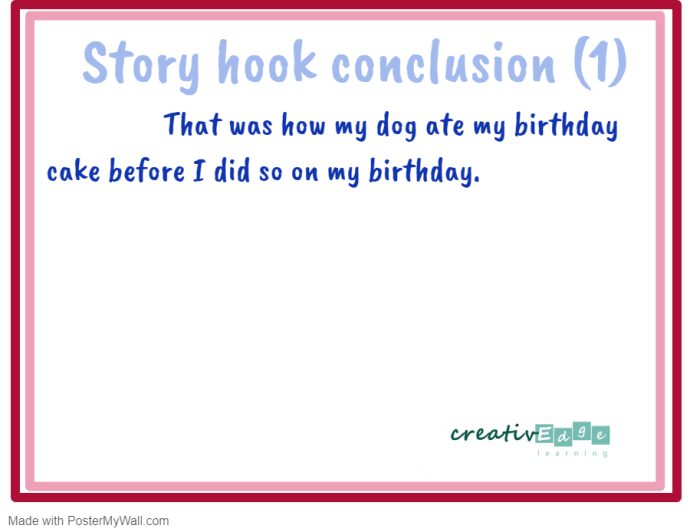
Step 2 – Add the main character’s feeling
Next, add the main character’s feeling about the incident.
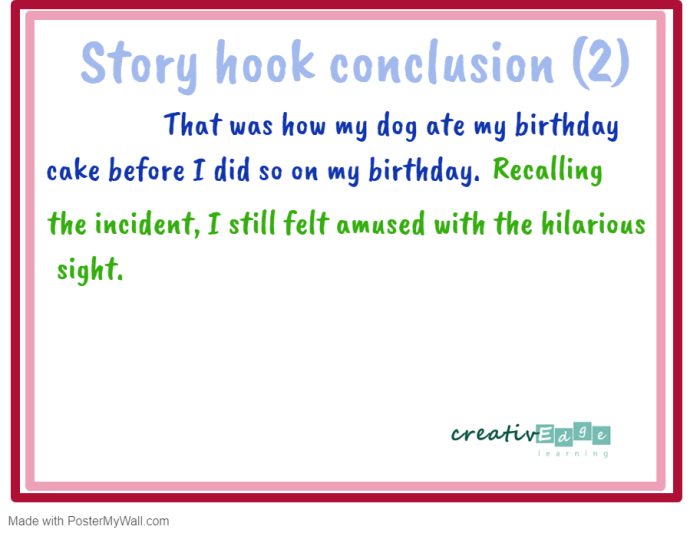
Step 3 – Complete with the main character’s hope or lesson learnt
For this topic, pupils can include a hope for the future. It is important to note that the title “A memorable occasion” must be in the conclusion too.
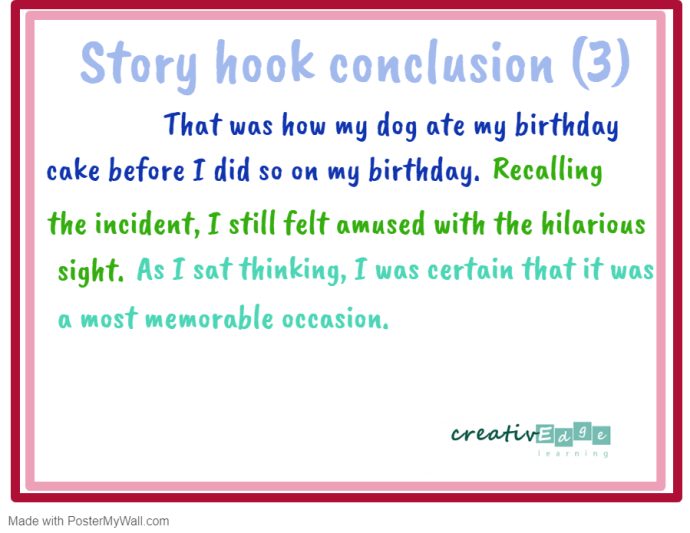
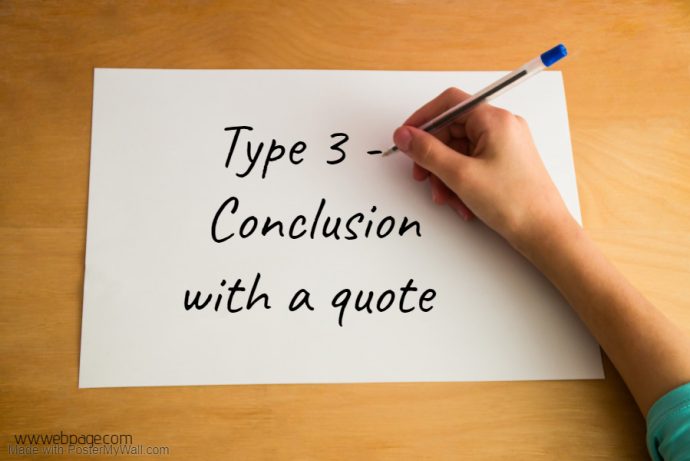
Another way to end the story is to include a quote in the conclusion.
Using Picture 1 of this topic, a suggested story line is your sister tore your favourite book. You planned to get back at her till you realised that she bought a new book for you.

Step 1 – Main character’s memory
In this case, it could be the remembering of all the nice things done for the main character which triggered his forgiveness.
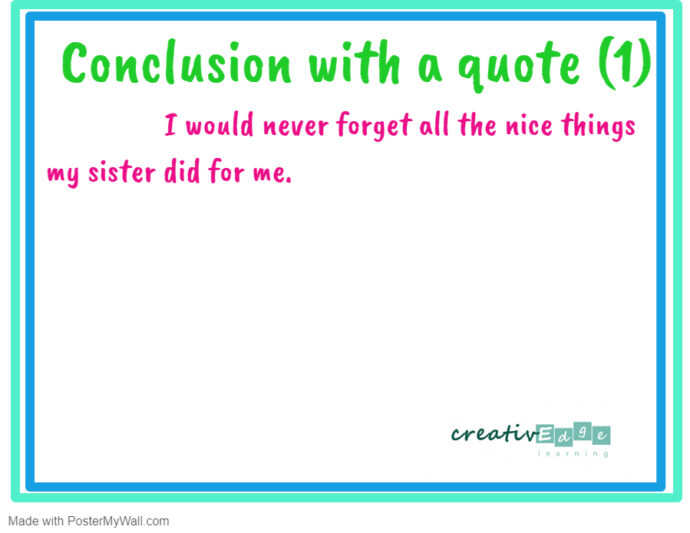
Step 2 – Feeling and reason
Add the main character’s feeling as he remembered what he planned to do to exact revenge.
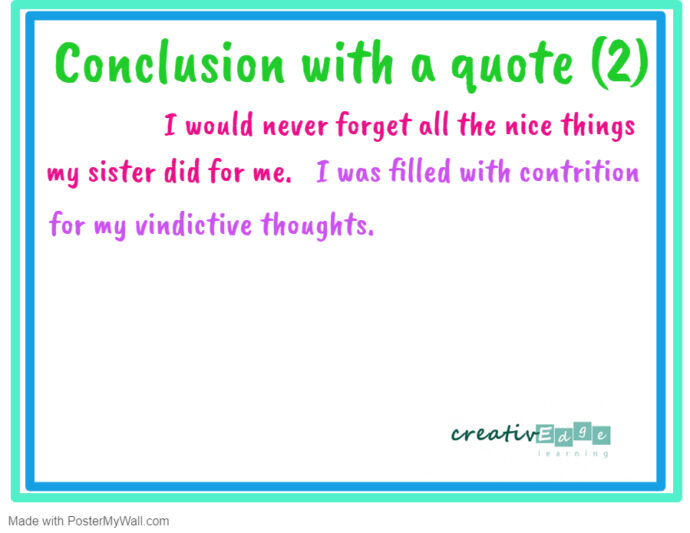
Step 3 – Quote to show lesson learnt
To end with a quote that is relevant to and includes the title.
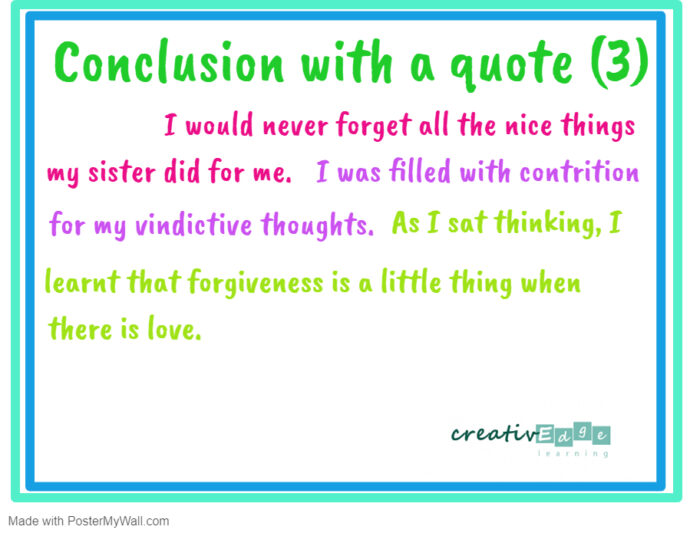
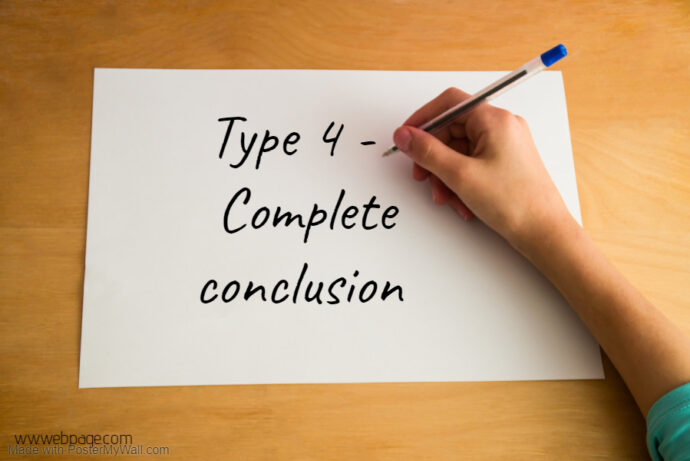
A complete conclusion ends the story with the main character looking back on the incident and reflecting on the incident to conclude what he learnt from the incident.
Let’s write a complete conclusion for the following topic. Using Picture 2, a suggested story line is the main character spotting his friend being bullied. He then got into a fight with the bully in an attempt to stand up for his friend.
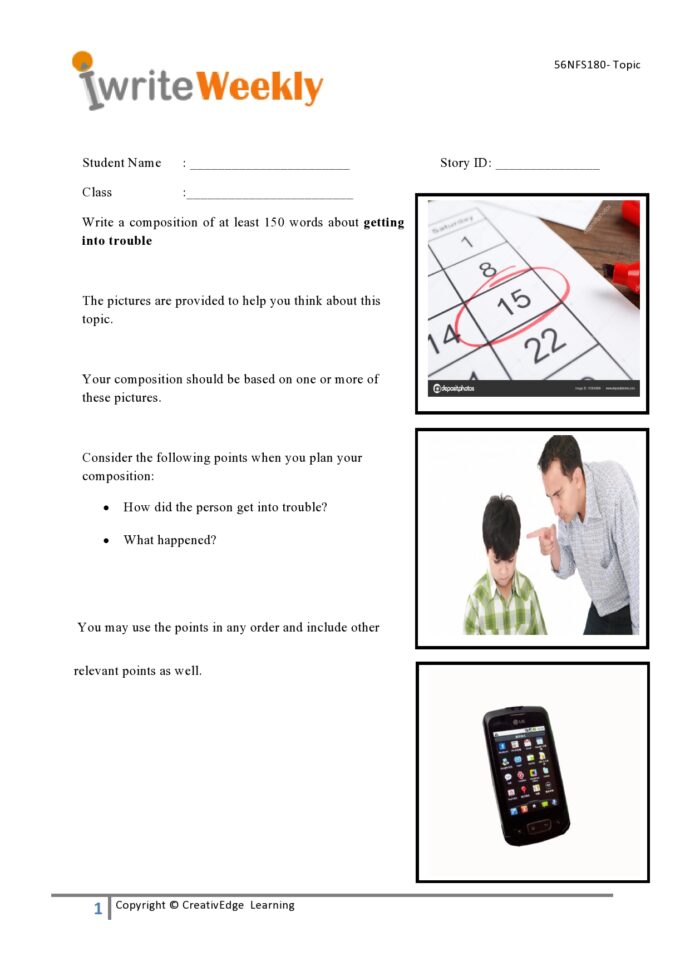
Step 1 – Main character’s memory
Based on the story line, to write the main character’s memory of the most important part of the story.

Step 2 – Add the main character’s feeling
Next, add the main character’s feelings regarding the incident.
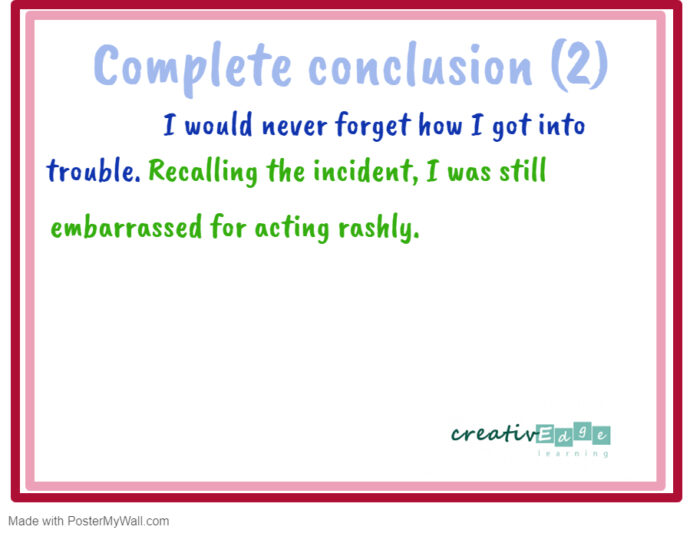
Step 3 – Complete with the lesson learnt by the main character
Finally end with the general lesson learnt by the main character.
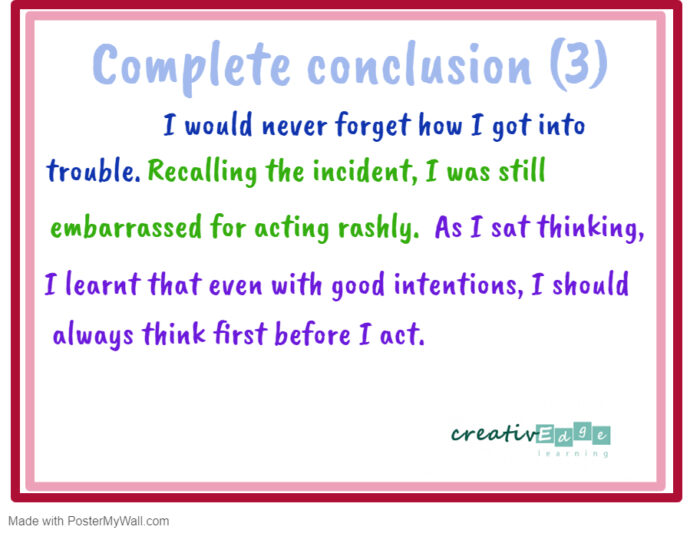
Join us for our Primary 5 and PSLE writing classes to learn all the writing skills to excel in the composition exam.



